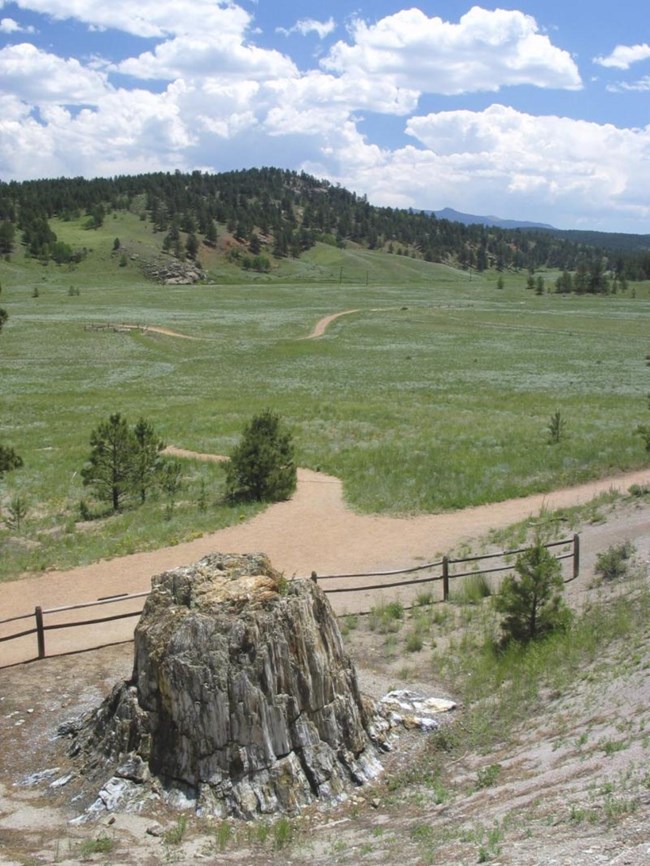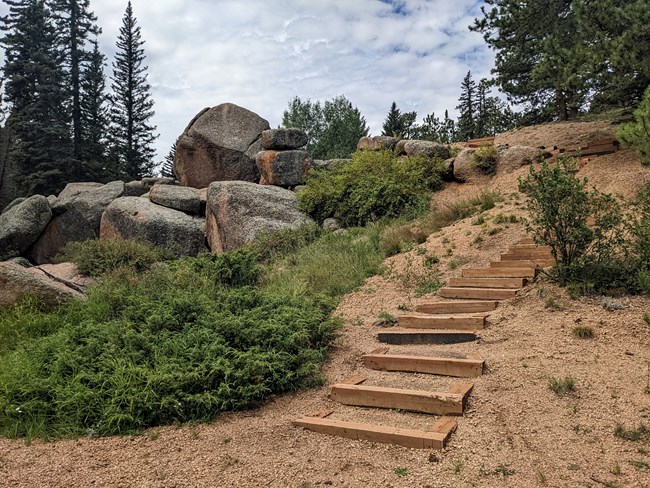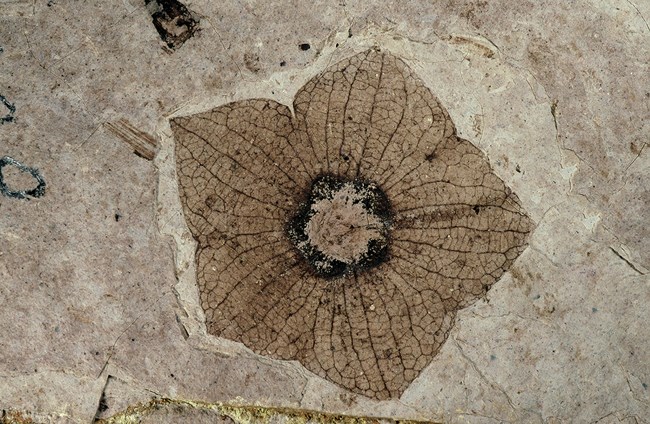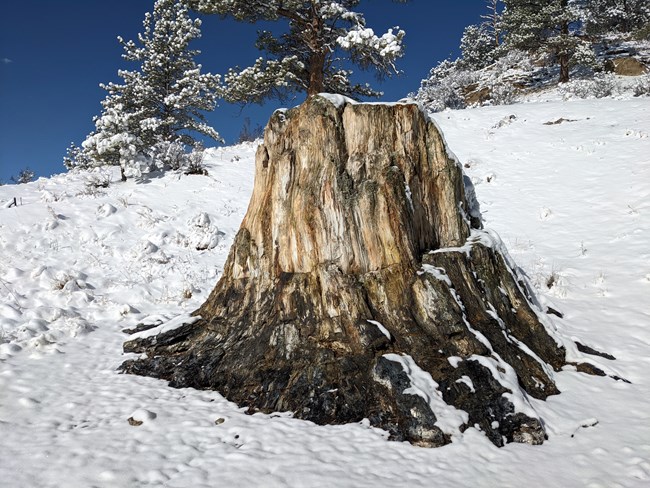
Cliff and Jean Dickey Ancient Climate and EcosystemsAt the end of the Eocene Epoch, the time when plants and insects were falling into Lake Florissant to be preserved as fossils, Florissant was wetter and much warmer than it is today. During the Eocene, Florissant had a warm temperate or even subtropical climate with decidous broadleaved plants and exotic tall conifers. As the Eocene ended, global climate cooled rapidly into the Oligocene. By the Oligocene, areas of similar elevation had a cooler climate dominated by conifers such as pine, fir, and spruce. More than 130 plant species have been described from Florissant. Fossils of plant leaves, fruits, flowers, seeds, pollen, and tree stumps have been preserved. Ecoene Florissant supported a variety of habitats, ranging from an aquatic environment in Lake Florissant, to the drier and harsher environments of the surrounding mountainsides. The farther a plant lived from the lake, the less likely it was to be preserved in the lake shales. Plant parts from species like Sequoia affinis were preserved frequently because they lived in wet valley bottoms near the lake, while species like pine, mountain mahogany, and oak are seen less frequently as fossils because they lived on more distant hillsides. The abundance of certain species also played a role in how often they are preserved. Fagopsis longifolia, the most commonly preserved plant, was an understory tree that inhabited the banks of the lake and streams. The number of these fossils relative to other species suggests that Fagopsis was one of the most common species in the Eocene environment. Many species present in Eocene Florissant have since gone extinct, while many genera continued to survive under colder conditions. Plants that are still common across North America include maples, rose. hickory, and hydrangeas. The Pinus and Populus genera continue to thrive at Florissant as ponderosa pines and quaking aspens.
NPS Photo: Clara Peterson GraniteMost of the pink to reddish-orange outcrops in the monument are the Pikes Peak Granite. The Pikes Peak Granite began 1.08 billion years ago as a large, molten, igneous intrusion known as a batholith. Hot magma intruded into pre-existing rocks and then cooled extremely slowly, allowing minerals to crystalize, forming the coarse-grained rock you see here. Some of the best areas to see the Pikes Peak Granite are on the Boulder Creek Trail and Twin Rock Trail. The Boulder Creek Trail winds through ponderosa pines and skirts around wet meadows, and later passes by a formation of giant eroded granite boulders. The Twin Rock Trail intersects with the Hornbek and Shootin' Star trails and features views of rock formations, open meadows, aspen groves, stream habitats, willows, and pond life. 
Shale FossilsThe majority of Florissant's fossils are plants and insects preserved in shale. Some pieces of shale are as thin as a sheet of paper, which makes them very fragile records of the past. The fossil record reveals that the climate and forest were much wamer and wetter during the Eocene, 34 million years ago. The shale was formed at the bottom of an ancient lake that once existed in the Florissant valley. Plants and animals that died in or near the ancient lake settled to the bottom where they were buried in layers of clay, ash and diatoms. Eventually, the layers hardened into rock and became fossilized. A significant aspect of Florissant's Geoheritage is that there are 1,800 described fossil species, making Florissant one of the richest fossil sites in the world.
When the nearby Guffey Volcano erupted 34 million years ago, ash combined with heavy rain or snowfall to create what is known as a lahar (volcanic mudflow). Lahars can rush downslope at speeds up to 120 miles/hour. This mudflow buried ancient redwood trees (Sequoia affinis) in 16 feet of cooled ash and derbis, cutting off the roots from oxygen. The roots and treetops decayed or broke off, only leaving the stumps. To turn the stumps into stone, mineral rich water from the lahar penetrated the wood, depositing silica on plant cells. As the tree continued to decay, more silica minerals (opal, quartz, and chalcedony) formed, replacing the woody tissue. Some plant tissue remained after the wood petrified, helping to preserve the cellular detail. Exposed petrified trees can be seen from the Petrifeid forest loop, Ponderosa Loop, and under stump shelters. |
Last updated: September 19, 2022
